Magic Salamanders & the Zero-Point Field (5 of 5)
Evolution in Motion
We’ve come to the 5th and final part of this strange series we’ve presented thus far.
The field of bioelectricity is not a popular area of research currently being that much of how the body is perceived to operate is predominated by proteins, genes, organs, and bodily fluids. The prevailing view of biological mechanisms is if a set of genes and proteins can be switched on or off, the body could be optimized. Our perspective is that this could be an incomplete understanding and that influencing top-down bioelectric signaling could be a primary drive of biological processes.
We believe that understanding how neural activity influences systemic and targeted bioelectric communication for disease reversal and longevity is of the utmost importance for our continued evolution as a species.
In the book, “The Body Electric”, Robert Becker outlines the effects of magnets and magnetic fields on bioelectric currents within salamander physiology:
“After finding a C-shaped permanent magnet, an item not much in demand since the advent of electromagnets, I set up the equipment. I took a deep breath as I placed the first anesthetized salamander on its plastic support, with one foreleg extended. I’d placed electrodes so that they touch the limb lightly, one on each side, and I’d mounted the magnet so as to swing in with its poles above and below the limb, close to yet not touching it. I took voltage measurements every few minutes, with the magnet and without it, as the animal regained consciousness. I also measured the DC voltage from the tips of the fingers to the spinal cord. In deep anesthesia, the DC voltage along the limb was zero and so was the Hall voltage. As the anesthetic wore off, the normal potential along the limb gradually appeared, and so did a beautiful Hall voltage. It increased right along with the limb potential, until the animal recovered completely and walked away from the apparatus. The test worked every time, but I don’t think I’ll ever forget the thrill of watching the pen on the recorder trace out the first of those Hall voltages.” - p. 101.
(An image on page 101 from “The Body Electric” displaying the Hall effect of a C-shaped permanent magnet on limb DC voltage.)
“I figured the brain currents must be semiconducting, like those in the peripheral nerves. I thought of looking for a Hall voltage from the head but reasoned the brain’s complexity would make any results questionable. Then I thought of using the effects backward, so to speak, measuring a magnetic field’s action on the brain rather than on production of the Hall voltage. Since the Hall voltage was produced by diverting some of the charge carriers from the original current direction, a strong enough magnetic field should divert all of them. If so, such a field perpendicular to the brain’s midline current should have the same effect as canceling out that normal current with one applied from the outside. The animal should fall asleep.”
“We tranquilized a salamander lightly, placed it on a plastic shelf between the poles of a strong electromagnet, and attached electrodes to measure the EEG. As we gradually increased the magnetic field strength, we saw no change - until delta waves appeared at 2,000 gauss. At 3,000 gauss, the entire EEG was composed of simple delta waves, and the animal was motionless and unresponsive to all stimuli. Moreover, as we decreased the strength of the magnetic field, normal EEG patterns returned suddenly, and the salamander regained consciousness within seconds. This was in sharp contrast to other forms of anesthesia.” p. 113.
(An image on page 113 of “The Body Electric” outlining the effects of magnets on changes in brain activity and consciousness.)
“We also found we could work backward, using the currents to produce anesthesia. A strong enough magnetic field oriented at right angles to a current magnetically “clamped” it, stopping the flow. By placing frogs and salamanders between the poles of an electromagnet so that back-to-front current in their heads was perpendicular to the magnetic lines of force, we could anesthetize the animals just as well as we could with chemicals, and EEG recordings of magnetic and chemical anesthesia were identical.” p. 238
It is quite fascinating that exposing a salamander's head to a magnet can induce anesthesia by affecting the direction of the direct current (DC) in the brain. It is equally intriguing that the salamander can immediately recover from this magnetically induced coma state and quickly regain full consciousness.
When it comes to humans, transcranial magnetic stimulation (TMS) is becoming increasingly more popular regarding clinicians utilizing it for its therapeutic effects. While TMS isn’t a new technology having been created in the 1980’s, it is being commonly used in hospitals to treat conditions such as depression, addiction, and even cognitive impairment in the elderly (Rizvi et al., 2018; Somani et al., 2019; Gorelick et al., 2014; Hu et al., 2024). TMS is a non-invasive technology that generally operates within the 1.5 to 2 Tesla range. The mechanisms of action are based on generating a magnetic field which is placed on the outside of the scalp which penetrates into specific brain regions and induces small electrical currents. These currents depolarize neurons in the targeted area which changes the firing patterns of neurons and activates brain cells. This stimulation can release neurotransmitters such as dopamine and serotonin creating a shift in emotional states (Baeken et al., 2011; Cho et al., 2009; Strafella et al., 2003).
While much TMS therapy operates at the 1 to 2 Tesla range in terms of strength, there is additional research highlighting the effects of much weaker magnetic fields on mammalian biology. For reference, 1 microtesla equates to 1 millionth (10^-6) of a Tesla. A 2015 rat study in The Korean Journal of Physiology & Pharmacology observed that exposure of a magnetic field 2 microtesla in strength for 2 or 5 days modulated their levels of dopamine, serotonin, and other neurotransmitters. A 2000 study in the journal Pineal Research found that in-vitro pineal glands exposed to magnetic fields 86 microtesla in strength suppressed melatonin secretion compared to baseline non-exposure. A 2004 study in the journal Clinical Neurophysiology observed that exposure to magnetic fields in the 100 microtesla range induced a 100 percent detection rate in humans when utilizing EEG measurement.
In the 1990’s, Dr. Michael Persinger and Stanley Koren developed a device called “The God Helmet“. This device utilized magnetic field stimulation in the range of 1 to 5 microteslas. This helmet has been reported to induce mystical-type experiences including “Out of Body Experiences” as reported by skeptic Michael Shermer. A 2004 study in the International Journal of Neuroscience observed that exposure to “The God Helmet” induced increases in gamma wave strength in the frontal and occipital regions of the brain. Dr. Persinger would even postulate in a 2003 write-up in Perceptual and Motor Skills that endogenous DMT upregulation coincided with “The God Helmet” experiences.
While microtesla level stimulation is quite weak compared to standard TMS, there is also research with even much weaker magnetic fields as low as 1 picotesla showing distinct changes in human neurology. For reference, 1 picotesla equates to 1 trillionth (10^-12) of a Tesla. A 2016 study in the journal Multiple Sclerosis and Related Disorders found that TMS stimulation ranging from 1 to 7.5 picotesla had the ability to significantly increase delta and theta frequencies in patients with multiple sclerosis. Similar effects have been observed in research regarding Parkinson’s disease as well as in children with autism (Anninos et al., 2016; Anninos et al., 2016). A 2021 study in the journal Medicina observed significant improvements in Alzheimer’s patients as well as changes in delta/theta frequencies from picotesla stimulation for 3 days.
Being that there appears to be significant effects on human neurology from such a wide range of magnetic field strength exposures, there appears to be a non-linear effect taking place. A 2023 review paper in the International Journal of Molecular Sciences outlines the dozens of studies showcasing this non-linear effect while presenting several mechanisms for this occurrence. A 2017 review paper in PLOS One cites the various studies observing the effects of hypomagnetic fields (extremely weak) on biology. The term non-linear refers to magnetic field strength as not being an inherent driver of physiological effect. There are cases in which weaker magnetic fields induce greater effect than stronger magnetic fields.
The significance of this non-linear effect is that it creates the potential for humans to be possibly affected by weak magnetic forces found in nature. One might ask, where on earth might a magnet be found?
Earth as a whole is considered to be one gigantic magnet. Earth’s magnetic field is generated by electric currents in the liquid outer core. The field strength of earth’s geomagnetic field generally ranges between 22,000 to 65,000 nanoteslas at the earth’s surface. A 2019 study from researchers at Caltech observed that the human EEG changes when exposed to rotating magnetic fields emulating earth’s magnetic field strength. A 2022 in Nature Scientific Reports observed that humans possess a magnetic resonance system with the earth. These findings present data indicating that humans can sense earth’s magnetic field much like the vast majority of vertebrates.
In recent times, a multi-disciplinary study from the Miguel Lillo Foundation in Argentina was published proposing the idea that psilocybin mushrooms contributed to the evolution of humans. This isn’t an entirely new concept having originated by Terence and Dennis McKenna decades ago while also being championed recently by famed mycologist Paul Stamets. This theory is more commonly known as the “Stoned Ape Theory” of evolution. The main points supporting this theory is as follows:
23 Different species of primates (including humans) consume mushrooms.
Climate change induced our hunter/gatherer ancestors to leave the forest and begin foraging in the Savannah.
Hunting entails looking for footprints and scat (fecal matter). Hippopotamus, elephants, deer, antelope feces all contains the mushroom psilocybe cubensis (containing the psychedelic psilocybin).
Psilocybin substitutes as serotonin inducing neurogenesis and neuroplasticity.
The human brain doubled in size 2 million to 40,000 years ago.
With the doubling in brain size came the ability to utilize language and plan for the future.
Psilocybin experiences increased empathy and reduced fear in our ancestors which eventually led to leadership skill sets.
This process did not take place solely over several generations but rather over millions of years leading to epigenetic neurogenesis.
We believe that these are relatively rational supportive points to support the theory. However, the belief that all human ancestors originated from a specific location in Africa is a risky proposition being that new data is constantly being generated in terms of human habitat throughout the world historically. In 2017, Nature published a study indicating that humans existed in California 100,000 years earlier than believed prior. A 2018 study in Science published data showcasing that human remains were found outside of Africa 55,000 years earlier than previously thought. A 2023 study in Nature indicates that human ancestors might have first evolved in Europe rather than Africa. It’s clear that when it comes to understanding human origins, there is much to be uncovered and that it only takes a few new discoveries to upset the proverbial apple cart regarding perceived ancient human history.
Our general critique of the “Stoned Ape Theory” largely pertains to assuming that our ancestors had a constant supply of psilocybin mushrooms being that the geographic location of our ancestors could have varied more significantly than once believed. In addition, a distinct percentage of the human population experiences nausea after consuming these psychedelic fungi which has shown to dissuade animals from continuing to consume these types of potential food sources. There’s also the issue of dosing and potential incapacitation from consuming large amounts leaving them vulnerable to predators in the process. However, the neurological effects of psilocybin pertaining to inducing neurogenesis, neuroplasticity, and cortex growth do provide foundational support for the “Stoned Ape” concept in general.
Nevertheless, there lies the possibility that the biochemical driver of human prefrontal cortex growth and the development of language and emotional maturation is much more accessible than mushrooms on antelope shit. We must remind the reader that DMT has all the physiological effects of psilocybin and potentially more being that it has shown greater diversity of receptor affinity (Fontanilla et al., 2009; Su et al., 2009; Barker et al., 2018). As we’ve outlined incessantly in prior pieces, DMT is produced endogenously in every mammal tested thus far including humans (Barker et al., 2012; Jimenez et al., 2022). In addition, 5-MEO-DMT and 5-HO-DMT are also produced endogenously which could possibly operate synergistically with DMT (J Kärkkäinen et al., 2005; Barker, 2018). Even non-psychoactive compounds such as harmine are endogenous and have been observed to induce neurogenesis (Dakic et al., 2016; Cao et al., 2021). In essence, the human brain already contains chemicals that could potentially lead to all the changes postulated to have taken place in our ancestors via psilocybin ingestion.
In 2019, a study was published in Nature Scientific Reports which observed that endogenous DMT levels in the brain were found to occur at similar levels to dopamine and serotonin in live rats. It was also established that the enzymes necessary to synthesize DMT were found throughout various parts of the brain (hippocampus, choroid plexus, visual cortex, cerebral cortex, and pineal gland). In 2024, a study was published finding similar results of endogenous DMT occurring at nearly double the levels of dopamine in the medial prefrontal cortex and the somatosensory cortex in live waking animals. These studies have changed the conversation of endogenous DMT altogether from once being perceived as a neurochemical that was likely only released during mystical-type states to being a modulator of everyday waking reality.
(Figure 7 from the 2024 study showing endogenous DMT levels compared to dopamine and serotonin.)
Being that endogenous DMT appears to be much more abundant in the mammalian brain than once believed, it seems rather clear that humans likely possess the biochemical soup contributing to enhanced cortex growth and consciousness expansion. The only question is whether there is any evidence indicating that the levels found endogenously can have any effect on these aspects of neurological growth.
A Canadian company named Algernon pharmaceuticals is currently doing research on the effects of sub-psychedelic levels of DMT for stroke recovery. This is due to the documented cellular protective and anti-inflammatory effects of the compound (Szabo et al., 2016). In 2021, Algernon conducted research which found a 40% increase in neuronal growth from administering sub-psychedelic doses of DMT in-vitro. The researchers administered DMT in the range of 100 picomolar to 30 nanomolar and claimed that significant growth occurred even at the lowest range. This is significant because the levels utilized in this research fall well within the range of endogenous DMT levels (nanomolar levels) from the 2019 and 2024 studies cited above. This indicates that upregulation of the Endohuasca system has distinct potential to create neurological changes even without inducing mystical-type experiences.
This brings us to the billion dollar question… what is the proposed catalyst for Endohuasca upregulation?
It seems highly unlikely that our primate ancestors utilized meditative techniques to induce altered states that have been theorized to upregulate our psychedelic system.
Based on the fact that earth’s magnetic field fluctuates in the nanotesla range (22,000 to 65,000) and that magnetic fields as low as 1 picotesla (1 nanotesla = 1000 picotesla) have been observed to alter human neurology, we postulate that fluctuations in earth’s magnetic field could potentially be a key driver of Endohuasca upregulation. The earth has a magnetic north and south pole that switches locations during pole shifts and geomagnetic excursions to a lesser degree. Pole shifts (full geomagnetic reversals) are characterized by periods in which the magnetic north and south poles have shifted 180 degrees switching positions. Geomagnetic excursions differ in a sense that they are considered to be short-lived and do not coincide with a full 180 degree shift. Pole shifts and geomagnetic excursions are believed to have taken place dozens of times throughout recorded history and are known to affect the strength of earth’s magnetic field.
A 2018 study in Science hypothesized that the modern human brain and skull developed about 40,000 years ago. Interestingly, a geomagnetic excursion called “The Laschamp Event” took place within this general time frame. The Laschamp Event was a geomagnetic excursion where the poles of the Earth shifted to such a degree that the magnetic field experienced a decline to 5% of it’s current state. This indicates a very significant fluctuation of earth’s magnetic field which could have affected many facets of the planet and all organisms residing on it. The speed of the magnetic field changes during this event could have contributed to the stimulation of neurochemical flux and with it the evolution of modern human brain development. While this might sound reasonable yet far-fetched at the same time, there is evidence suggestive of geomagnetic influence on plant evolution and development (Maffei, 2014; Bertea et al., 2015; Radhakrishnan, 2019; Islam et al., 2020; Erdmann et al., 2021; Pan et al., 2023).
(Figure 9 (C &D) from a 2012 study regarding the dramatic effects of the Laschamp Event on earth’s geomagnetic field.)
While alterations in the strength of earth’s geomagnetic field could have directly effected all organisms on earth, there are also secondary effects such as a change in ultraviolet (UV) ray penetration to the surface of the earth. Normally, earth’s magnetic field shields the ozone layer from UV radiation damage. In the case of weakened geomagnetic fields during pole shifts and excursions, a depletion of the ozone field and increased penetration of UV radiation has been observed (Cooper et al., 2021). A 2010 write-up in Quarternary Science Reviews presents the hypothesis that the increase in UV-B rays from the weakened magnetic field during the Laschamp Event, played a role in the demise of the Neanderthals about 41,000 years ago. A 2019 write-up in the journal Review of Geophysics elaborates on this Laschamp-Neanderthal extinction hypothesis citing specific DNA mutations (aryl hydrocarbon receptor) allowing humans to better cope with the increased UV-B radiation. This is proposed to have led to the demise of not only neanderthals but numerous mammalian extinctions during this time. A 2018 write-up in the journal Endocrinology discusses the effects of UV light on chemical, hormonal, and neural signaling with supportive evidence indicating that UV-B radiation acts in a much more effective and efficient manner than UV-A radiation. The researchers unequivocally cite that UV rays have been a key factor in shaping both biological evolution and homeostatic responses.
Interestingly, an unrelated 2005 study in the Journal of Psychoactive Drugs observed that the Psychotria Viridis plant exudes a circadian rhythm regarding DMT synthesis. The researchers found that the highest level of DMT production in the leaves occurred during the hottest time of the day. They hypothesized that the plant produces DMT either to protect itself from solar radiation or that DMT is synthesized to absorb solar radiation for other purposes. They also state that the rhythm is not likely to be coincidental as DMT is known to have the greatest absorbance in the UV-B radiation spectrum.
There is evidence to suggest that UV-B radiation can affect serotonin synthesis in the human brain and body (Sansone et al., 2013; Luo et al., 2022; Slominski et al., 2024). This indicates that UV-B could also potentially be a modulator of endogenous DMT production. In addition, there is also data indicating that UV-B radiation is a driver of plant adaptation response and evolution (Bjorn et al., 2002; Shi et al., 2021; Balcerowicz, 2022; Chen et al., 2022). Interestingly, part of the plant's adaptation response to UV-B radiation is to increase the production of flavonoids and antioxidants (Piccini et al., 2020; Azarafshan et al., 2020). A 2013 study in the Journal of Agricultural and Food Chemistry observed that DMT, serotonin, and other related tryptamines are found in commonly consumed fruits such as lemon, orange, mandarin, chinotto, and citron. Several studies have also observed the monoamine oxidase inhibitory (MAOI) properties of commonly consumed fruits and vegetables (Ademosun et al., 2014; Marzo et al., 2022). This is an intriguing finding being that MAOI’s are what prevent the breakdown of DMT and other monoamine neurotransmitters in the body. These findings regarding plant adaptation response are significant due to the potentiality that increased UV-B ray exposure from weakened geomagnetic fields could lead to a global upregulation of DMT and MAOI compounds in all plants. This would essentially provide a varied dietary source of compounds that foster neurological growth in addition to the direct effects of geomagnetic flux and UV-B radiation on the neurochemical balance of our ancestors.
(Table 2 from the 2022 study showcasing monoamine oxidase inhibitory properties from commonly eaten fruits and vegetables.)
Thus far we have provided data points indicating that psilocybin mushrooms do not seem entirely necessary to induce the changes correlated with human evolution. We believe that the pole-shift theory of evolution provides a more comprehensive take on this concept of psychedelic driven cortical growth being that it addresses accessibility issues and simultaneous global influence. We must remain cognizant that these effects are proposed to be akin to micro-dosing chronically 24/7 over multiple generations. In the case of the “Stoned Ape Theory”, it is proposed that these evolutionary changes take place over millions of years. We believe that it’s not entirely clear how long this process of evolution takes place as there could be non-linear progression taking place. There lies the possibility that during pole shifts and geomagnetic excursions there is an evolutionary jump that takes place with lulls of evolutionary processes in between these events.
The question that now arises is… when could the next evolutionary leap take place for humans?
It’s been cited by the New York Times and Smithsonian Magazine that since 1860, the magnetic north pole has traveled 1,500 miles. This indicates an average of about 9 miles per year. However, in recent times, it’s been estimated that magnetic north has been moving anywhere from 30 miles per year to as much as 50 miles per year. Airports around the globe have needed to adjust their runway coordinates based on these changes. In 2014, researchers at the European Space Agency (ESA) cited that they had uncovered data indicating that earth’s magnetic field was weakening at a rate 10 times faster than originally predicted. Previously, researchers estimated that earth’s magnetic field was weakening 5 percent per century but the new data indicates that it is actually weakening at 5 percent per decade. At the current rate of movement, a full geomagnetic reversal could take place over the next 250 to 300 years. This seems entirely plausible based on a 2018 study published in the Proceedings of the National Academy of Sciences which found that a partial pole shift took an estimated 144 years to complete nearly 100,000 years ago.
Is there any evidence indicating that the current pole shift is affecting organisms on earth?
In 2022, a paper published in Science cited that based on analysis of genetic variation in 19 different wild animal groups throughout the world, evolution is occurring 4 times faster than originally thought. This study looked at animals on different continents as well as different species ranging from superb fairy-wrens in Australia to spotted hyenas in Tanzania and red deer in Scotland. According to the researchers, it is the first time that the speed of evolution has been assessed on such a large, global scale. The average length of the study took place over 30 years.
In 2016, researchers from Cornell University published a paper in the journal Genome Research citing the finding that primate evolution can occur at a much faster rate than previously believed. Whether this is an emergence of current evolutionary processes or a technological advance in terms of measurement is unclear.
In 2019, it was observed for the first time that a specific breed of pig (Visayan Warty pig) was capable of utilizing tools to help them dig and build nests. This ability had never previously been seen in pigs and could indicate that an evolutionary change is taking place currently. Also in 2019, it was observed that a species of reef shark known as the leopard epaulette shark evolved the ability to walk on land in a quick time frame. A recent 2023 study published in the journal Evolution measured the brain sizes of 159 different dog breeds and found that breeds that were more distantly related to wolves had unexpectedly experienced a significant growth in brain size over the past 150 years.
In 2016, a study published in the journal Molecular Ecology observed that rapid, genome-wide evolution took place in a species of plant named Brassica rapa following recent drought conditions. A 2007 study published in the Proceedings of the National Academy of Sciences found that there was a rapid evolution of flowering time in response to change in climate. In 2016, an article in the journal Science outlined that rapid plant evolution plays a key role in its ability to spread across fragmented landscapes.
It seems as if there could be a few lines of evidence indicating that an acceleration of global animal and plant evolution could be taking place currently.
(Figure 1 from the 2022 study observing evolutionary acceleration across 19 species around the globe for the past 30 years.)
In terms of the effects of the ongoing pole shift on human evolution… it’s difficult to say exactly what is taking place. A 2022 review paper in the journal Autism Research outlines the fact that autism is being diagnosed globally at an increasing rate compared to decades past. Unfortunately, the diagnosis of autism rarely coincides with objectively measured quantification of a subject’s brain via MRI, PET, or EEG. Therefore there lies the possibility that different subjects diagnosed as “autistic” can have very different neurology and functionality as well. The formal definition of autism is “a neurological and developmental disorder that affects how people interact with others, communicate, learn, and behave.”
Some researchers believe that autistic individuals possibly exude increased levels of endogenous DMT synthesis coinciding with their changes in behavior. A 2019 review paper in Frontiers in Endocrinology discusses the potential link between increased endogenous DMT production and the neurological abnormalities associated with autism. A 1972 study published in the Journal of Autism and Childhood Schizophrenia measured the levels of DMT, 5-MEO-DMT, and 5-HO-DMT in the urine of 12 children (6 controls, 6 diagnosed with infantile autism). The researchers found that none of the subjects exuded measurable levels of DMT & 5-MEO-DMT in their urine. However, 5-HO-DMT was measured in 5 of the 6 children with autism while none of 6 control subjects had measurable 5-HO-DMT.
A 2010 study published in the journal Neuro Endocrinology Letters measured the levels of urine 5-HO-DMT in 15 young adults with autism compared to 18 control subjects. The researchers found that the autism group exuded 3.30 +/- 0.49 microg/L while the control group exuded 1.53 +/- 0.30 microg/L indicating that autistic young adults exude roughly 200% greater levels of 5-HO-DMT in their urine.
A 2017 study in the Journal of Neuroscience research found that MAO-A activity in patients with autism (ages 4 to 38) were significantly lower (20.6%) compared to age matched controls. A 2011 study published in JAMA observed that children with autism had 67% more neurons in their prefrontal cortex compared to non-autistic children. The researchers also found that the brain weight of autistic children was 17.6% greater than that of non-autistic children. A 2017 study published in the journal Research in Autism Spectrum Disorders observed that subjects with autism exuded greater synaptic plasticity than non-autistic subjects.
While autism is generally viewed as a neurological & development disorder, there are some examples of enhanced function from subjects diagnosed as autistic. In some cases, these enhanced functions are so pronounced that the person is labeled as an “autistic savant”. The formal definition of a savant is a person who exhibits exceptional skill or brilliance in some specific field such as math or art.
An example of someone who has been labeled as an autistic savant is a man named Kodi Lee. Kodi was born with optic nerve hypoplasia causing him to be blind as well as being diagnosed as autistic at an early age. He also has been labeled as a musical savant who went on to be declared the winner of season 14 of the television show “America’s Got Talent”.
There is also the extraordinary case of Flo and Kay Lyman. These women are the world’s only female autistic savant twins. Both Flo and Kay were diagnosed as autistic at an early age in the 1960s. However, it wasn’t until 1996 that the world became aware of their special abilities related to memory. They had the ability to name the day of the week for any date, past or future known as calendrical savantism. They also had autobiographical memories in which they could recall what they had for breakfast, what they wore, and the weather for any given day. This ability led them to be nicknamed the “Rainman Twins” based on similar abilities exuded by a man named Kim Peek who the movie “Rainman” was based on.
Stephen Wiltshire is a man known for his ability to draw intricate landscapes from memory after seeing them only once. Stephen is considered to be an autistic savant and an architectural artist. In 2006, he was made a Member of the order of the British Empire (MBE) based on his services to art and also opened up a permanent gallery on the Royal Opera Arcade in London.
There are also the case of businessmen like Elon Musk who have been cited to be autistic while managing to develop multiple impactful businesses. One of the foremost researchers regarding autism and savants was a psychiatrist known as Dr. Darold A. Treffert (1933-2020). Dr. Treffert would develop the Treffert Center which is a state-of-the art medical facility dedicated to researching the potential of the human mind, autism, and focusing on strengths rather than limitations. He would author the best selling books titled, “Extraordinary People: Understanding Savant Syndrome” and “Islands of Genius: The Bountiful Mind of the Autistic, Acquired, and Sudden Savant”. Through decades of research, Treffert would observe that as many as one in ten persons with autism would exude savant-like abilities of various kinds.
Another researcher and medical doctor named Dianne Hennacy Powell has researched even more extraordinary abilities of savants outlined in her research paper titled, “Autistics, Savants, & PSI: A Radical Theory of Mind”. She documents the fact that her observations indicate that a subset of autistic individuals exude capabilities that fall outside of the traditional accepted senses by mainstream neuroscience.
Could it be possible that this significant uptick in the diagnosis of autism and the subsequent savant capabilities is an indicator of accelerated evolutionary processes? It seems as though in some cases, the diagnosis of autism can coincide with greater brain volume, increased neuronal density in the cortex, decreased MAO activity, and increased synaptic plasticity. All of these factors could be attributed to an upregulation of the Endohuasca system. The fact that some autistic subjects can exude supernormal abilities such as PSI could also be considered indicative of endogenous psychedelic upregulation being that experiences such as telepathic communication has been reported quite prominently in psychedelic circles.
Nevertheless, we believe the topic of autism is a complicated one with many factors involved.
If evolutionary activities are currently taking place on earth, we do not believe that this is a smooth linear process. Much like the process of increasing muscle size depends on inducing the proper amount of stress and rest, environmental factors driving evolution can over stress some while under stressing others. With the integration of hand-held electronics on a mass scale it’s difficult to parse out exactly what external inputs are affecting our species progression or in some cases digression.
As many things in life, we will have to wait and see how this all plays out.
One of the interesting moments in history that is proposed to have changed the trajectory of human culture is the Younger Dryas Impact hypothesis. This hypothesis is predicated on the belief that meteoritic bodies hit and/or exploded over North America 12,900 years ago. This is believed to subsequently have led to significant changes in climate, the extinction of large animals, the demise of the Clovis archeological culture, and a range of other effects. Interestingly, a geomagnetic excursion called the “Gothenburg excursion” is also known to have taken place within this same time frame (13,750 to 12,350 years ago). There are 3 reasons why we believe that the Gothenburg excursion rather than meteoric impact could have been the primary driver of these dramatic changes:
The cave paintings that have been attributed to meteor showers and explosions could be mistaken for auroras. Auroras are also known as the northern lights or southern lights which appear in the sky as ribbons or curtains in a variety of colors. They are usually only visible at night in high-latitude regions near the Arctic and Antarctic circles. However, during pole shifts and geomagnetic excursions, auroras become visible at lower latitudes making them visible along the equator (Mukhopadhyay et al., 2021). We believe that this is a more realistic source of the cave paintings as they likely lingered in the sky for a much longer time (decades) than meteors and without the fear of suffering from impact.
The vast amount of global climate change that took place following the Younger Dryas Impact could have been driven by the systemic changes to the earth driven by the movements of the poles. This dramatic effect on the earth’s environment and climate has been proposed to have taken place during the Laschamp Event (Cooper et al., 2021) as well as the Gothenburg Excursion (Fairbridge, 1977; Mörner et al., 1977). There are many potential factors involved in pole-shift driven climate change such as a weakening of the magnetic field, ozone layer depletion, increased UV radiation, mantle convection changes, and all the downstream effects from these occurrences.
(An animation of earth’s mantle convection in which hot material rises which could be altered during movement of the magnetic poles.)
The composition of the black mats associated with the Younger Dryas Impact (Haynes jr., 2008) could be attributed to increased mantle convection from the pole shifts driving increased thermal springs and volcanic activity. The sediments from the black mats soil consist of paleosols, aquolls, diatomites, or algal mats which can all be found to be attributed to volcanic eruptions both on land and underwater (Solleiro-Rebolledo et al., 2016; Yarima et al., 1987; Eaton et al., 2013; Hadland et al., 2024). Other compounds associated with meteoric impact such as iridium and helium-3 have also been observed to occur alongside volcanic activity (Zoller et. al., 1983; Marty et al., 1992; Horton et al., 2023).
These reasons alongside the proposed biological changes that coincide with changes in earth’s magnetic field are the reason we suspect that the Gothenburg excursion might have been a key driver of humanities proposed cultural change.
While there has been great fervor in recent times in regards to the integration of artificial intelligence and digital intertwining with human neurology as a manner to “accelerate” our species, it seems extremely premature to make such postulations. Without comprehending the mechanisms of autistic savants, acquired savant syndrome, or even how memories are accessed or formed, the merging of humans with digital technology could actually hamper the human potential rather than foster it. There lies the possibility that humanity (as well as virtually all organisms on earth) is undergoing an intense transformative process which is ushering in a more evolved version of ourselves. With the recent findings of the shifting of earth’s rotational axis (no, it’s not caused by water pumping), it seems that there is no slowing down of the global changes taking place to the planet which ultimate effect everything on it. We believe it might best be served that rather than rushing to integrate digital technology within our bodies, a barrier that separates humans from technology might be best left intact.
We believe that the field of bioelectricity research combined with classic neuroscience, neurochemistry, and altered states research will usher in a fundamentally new perspective regarding the human potential and evolution. It is an exciting time to ponder these ideas and watch things unfold!
P.S. One of the most prolific mystics of the 20th century was a man named Edgar Cayce (1877-1945). Cayce was named “The Sleeping Prophet” because he would put himself in a deep trance-like state and answer questions that he was incapable of doing so during his normal waking state. As we’ve outlined in this series and other writings, we believe that trance-like states allow for subjects to tap into a wider spectrum of the zero-point field (ZPF). Cayce had over 14,000 readings transcribed and recorded which are still currently accessible today at his foundation. One of Cayce’s predictions was that in the future there would come a time when the veils between the waking and the deceased would thin allowing for more direct interaction between both sides. We believe that this entails all humans having greater access to the ZPF induced by the pole shift. Much like the angle of placement of the C-magnet dictated the effects on the salamander’s consciousness, the movement of the poles are causing gradual changes in human perception. There lies the potential that as the speed of the pole shift increases, an expansion of perception and even abilities starts to arise more frequently. Just a thought…


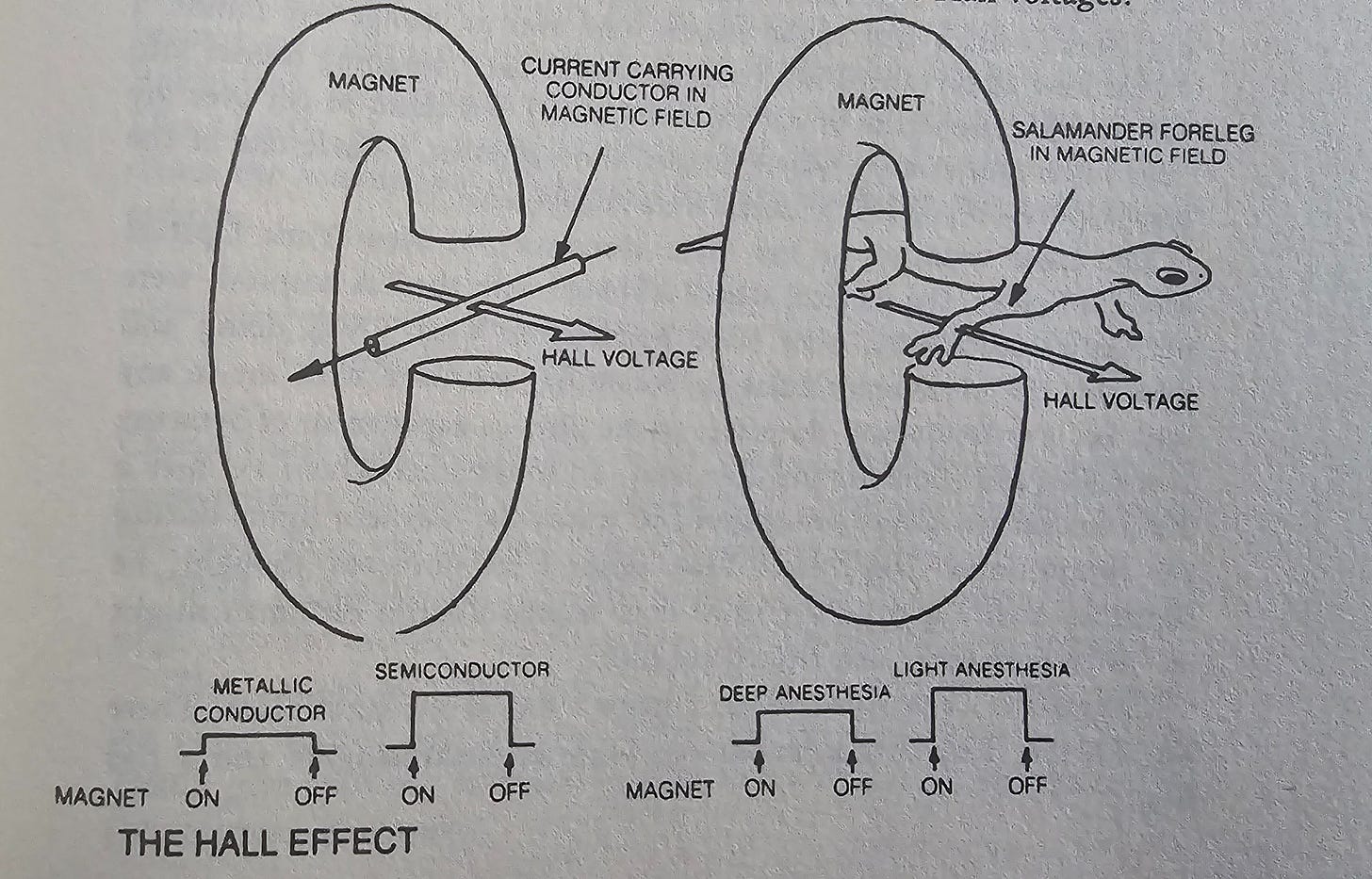
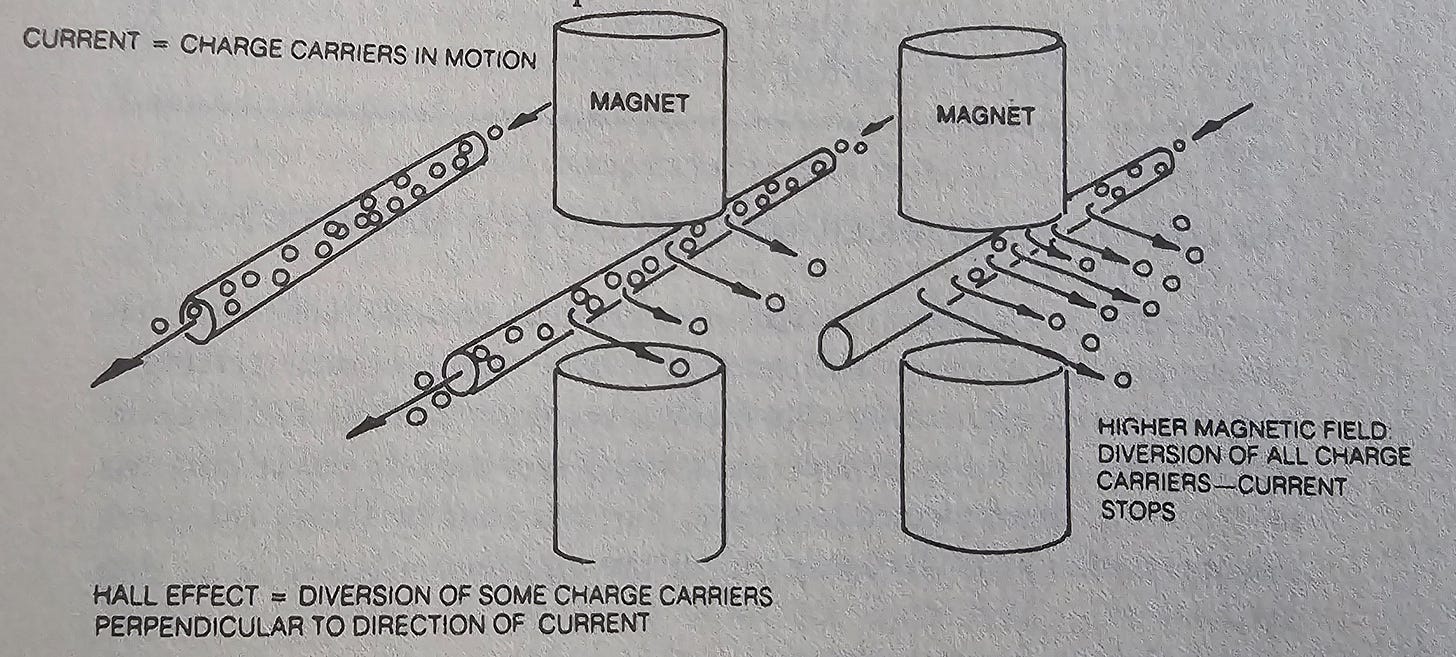
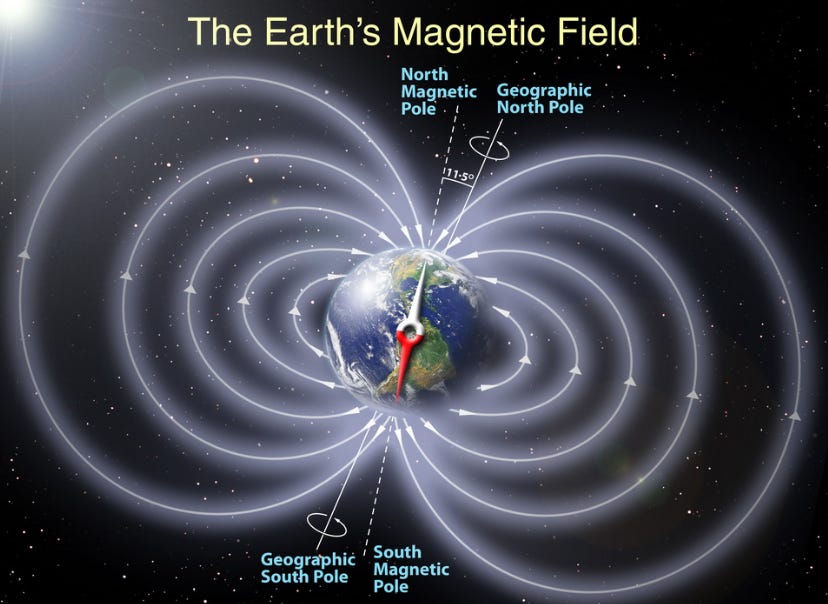
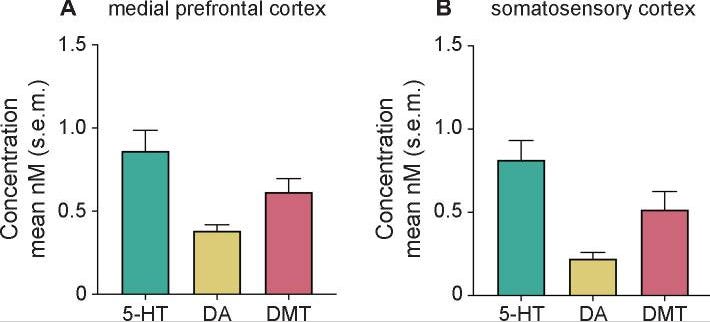

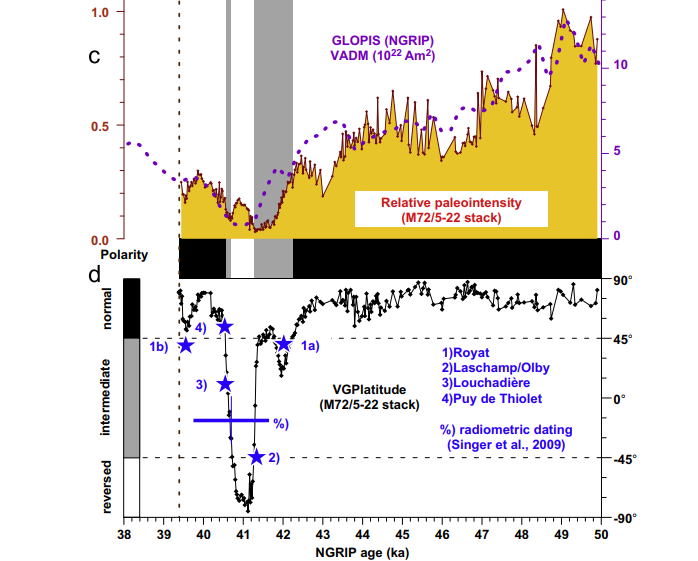
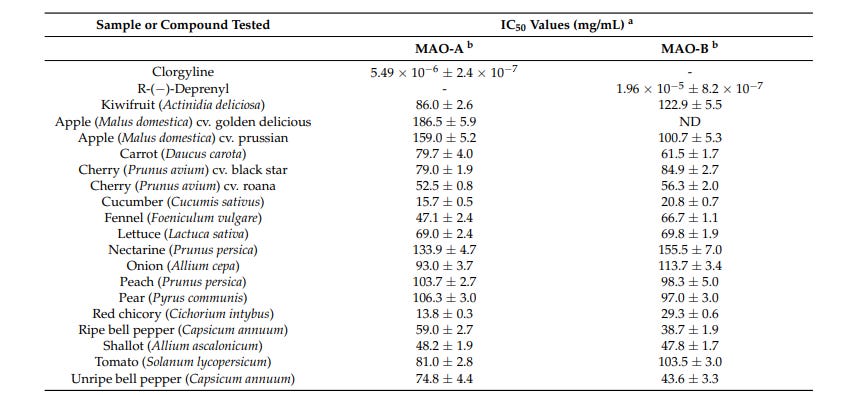
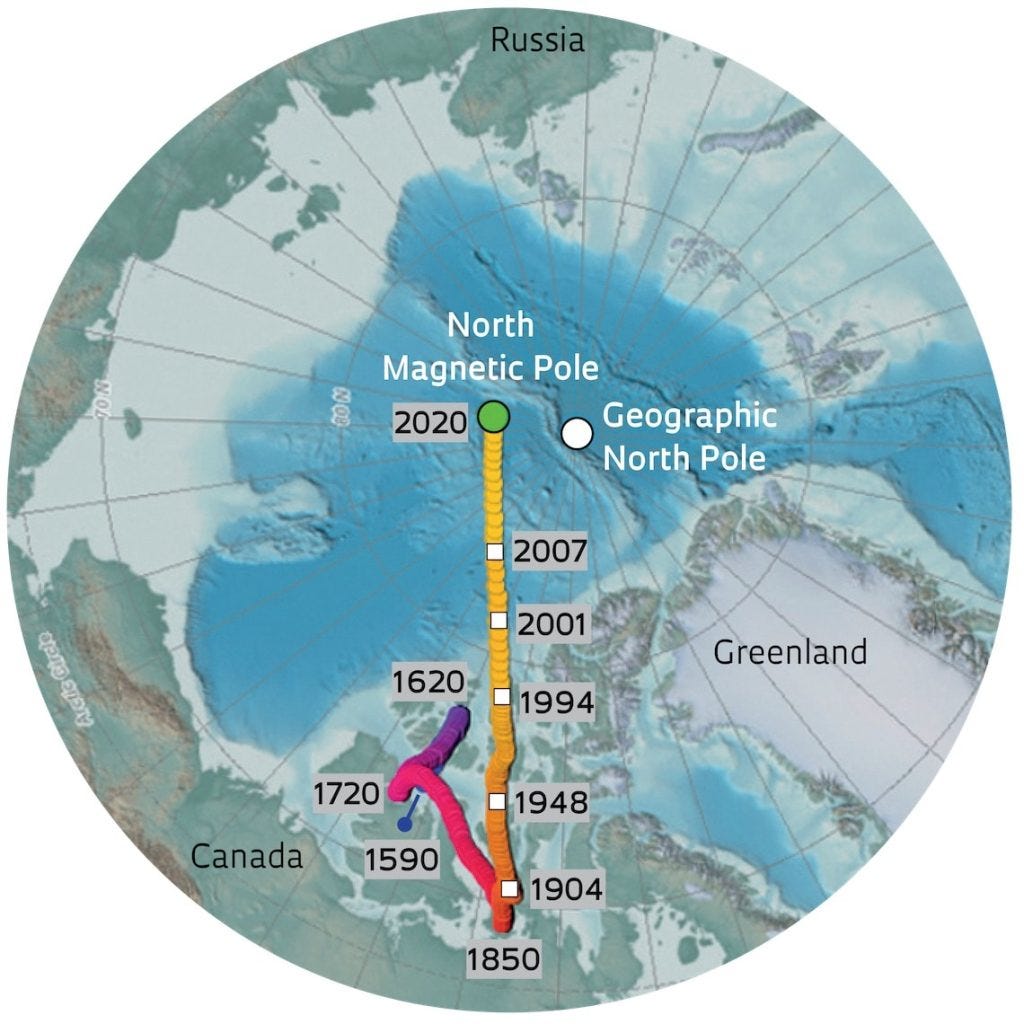
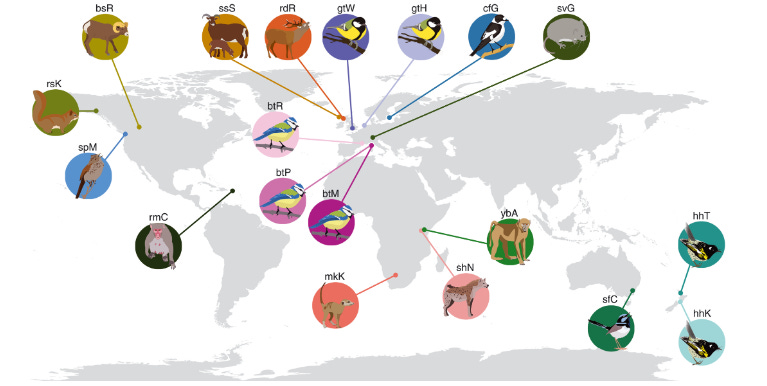
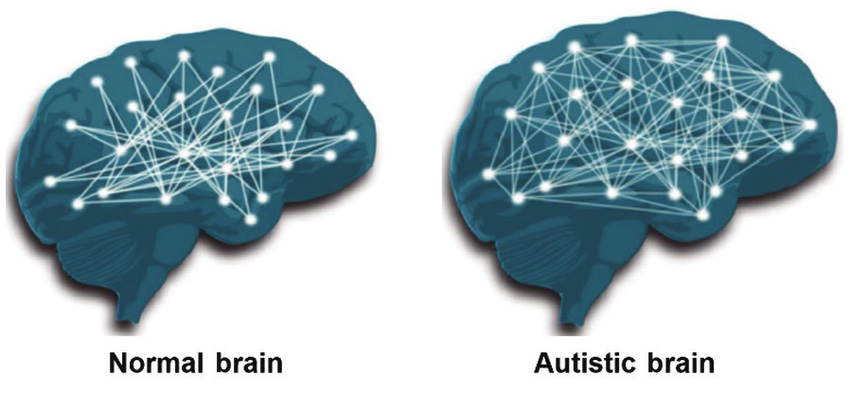


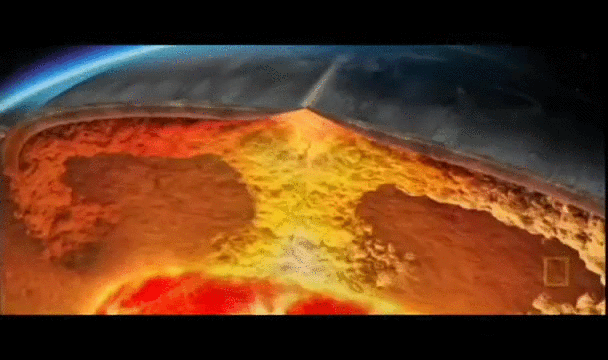
Enjoyed the series very much - as usual learned a ton and it's great to see all the connections you make.